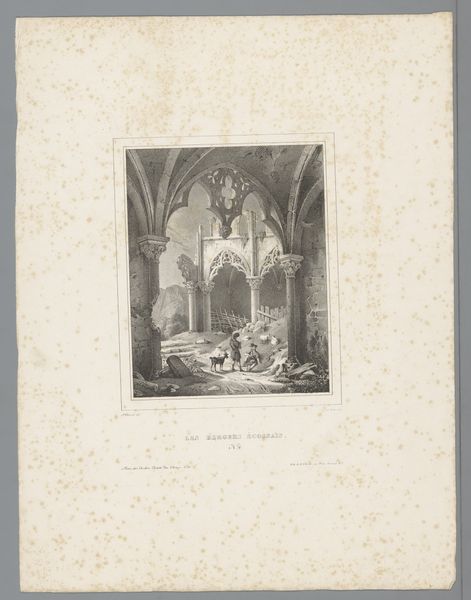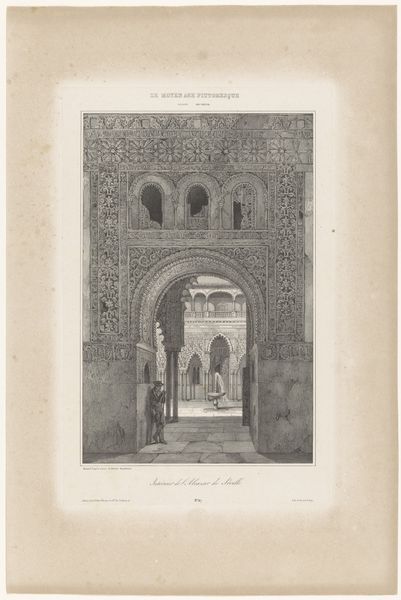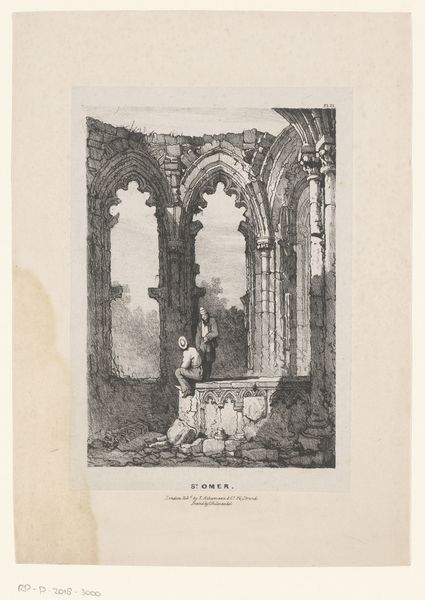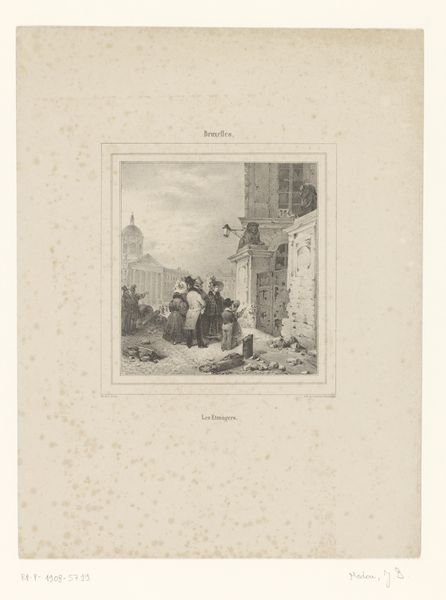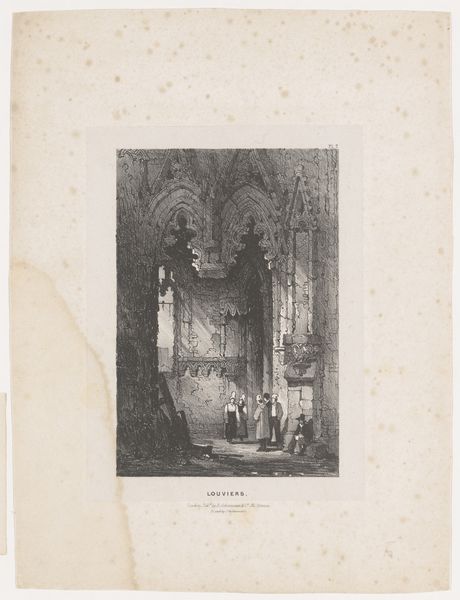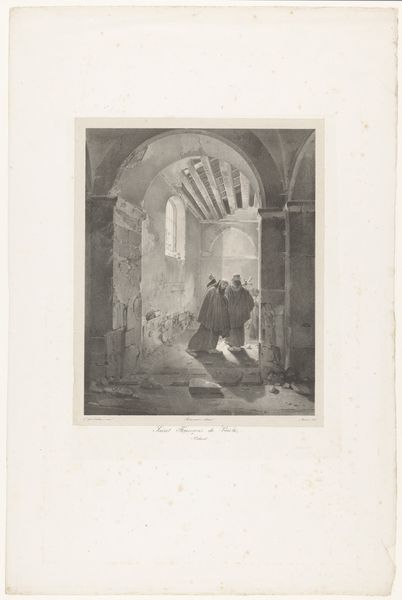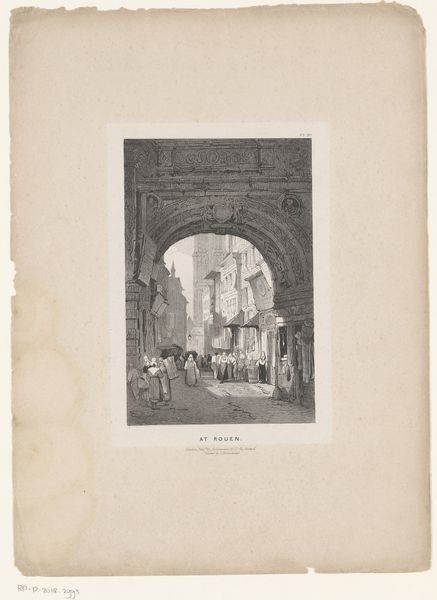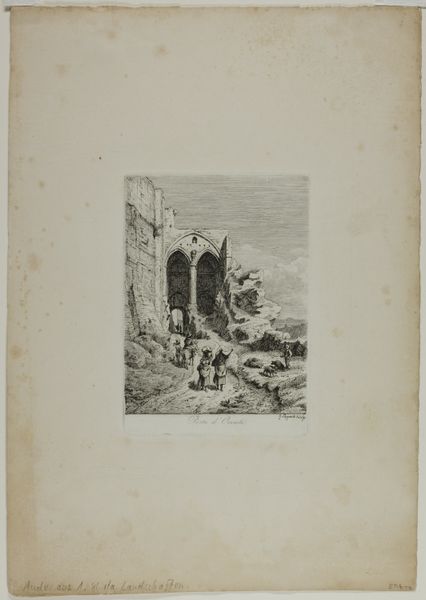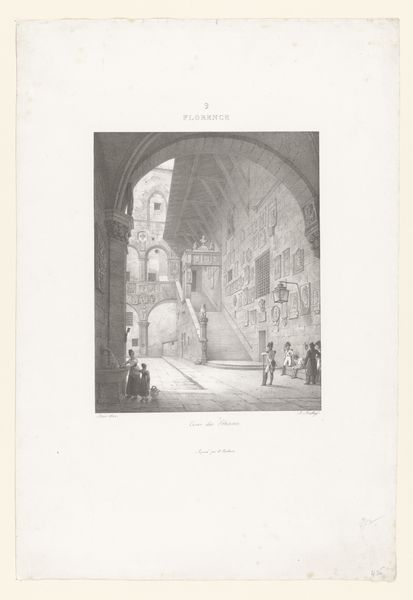
drawing, print, paper, engraving
#
drawing
#
medieval
#
ink paper printed
# print
#
old engraving style
#
landscape
#
paper
#
line
#
genre-painting
#
history-painting
#
engraving
#
realism
Dimensions: height 351 mm, width 267 mm
Copyright: Rijks Museum: Open Domain
Curator: What strikes you most when you first view this engraving of a church interior in Genoa? Editor: It's stark. The contrast between light and shadow really emphasizes the monumental scale of the architecture and the smallness of the figures within. I’m drawn to the lines, the sheer labor in creating this detailed scene. Curator: Absolutely. This piece, dating roughly from 1832 to 1862, currently resides at the Rijksmuseum. Consider its historical context—a time when travel and access to such imagery were far less common. Editor: Right, engravings were key to circulating images and ideas. I am interested in the paper, ink, and process behind producing this image. Curator: Yes. The circulation is significant. And note the figures kneeling before what appears to be a tomb. The artist offers a glimpse into 19th-century religious practices and social hierarchies embedded within these spaces. It encourages considering identity and gender of these figures as well. Editor: I agree that the figures add a sense of narrative but look at how the arches loom above, dwarfing everyone. The means of production emphasizes the overwhelming power of the church as an institution. The paper and ink, humble materials, serve to depict something grandiose. Curator: It makes me think about Foucault’s theories of power and space. How do these architectural structures shape behavior and reinforce social norms, and whose stories are centered here? Editor: The focus isn't so much on whose story, but rather how this image functions as a document of labor, of materials transformed to create meaning, whether intentionally or not. It shows us both the reverence and the production value inherent in its making. Curator: I see your point about the labor, but I'm also interested in who this image was for. Was it meant to inspire piety, document a place, or serve some other purpose? Thinking about reception is important. Editor: Ultimately, I think we can agree it stands as a compelling piece showcasing the impact of material processes. Curator: Yes, considering it through both social and material lenses provides a richer understanding. Thank you.
Comments
No comments
Be the first to comment and join the conversation on the ultimate creative platform.
